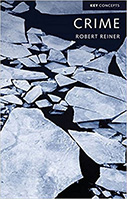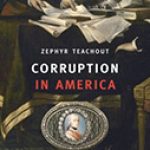CRIME, THE MYSTERY OF THE COMMON-SENSE CONCEPT

Author: Robert Reiner
Publisher: Cambridge, UK: Polity Press, 2016. 246p.
Reviewers: Brandon Dulisse and Megan Travers | October 2017
In Crime, Robert Reiner expounds on the often discussed but rarely understood concept of “crime,” through a detailed examination of its roots in the legal, moral, and social underpinnings that have shaped its application, while continuing to evolve in every successive generation. Often defined as a one-dimensional concept, Reiner exposes the striking complexities of crime, while at the same time offering insight into how western society has attempted to operate without a general consensus on the topic. As the author points out early on, the definition and applicability of crime and criminal process have held various meanings to many different groups of people across cultures and continents, as well as within individual cultures’ socioeconomic and moral strata. Reiner breaks down these unique differences chapter-by-chapter, focusing on a singular method by which society tries to define crime (for example the legal, moral, social, and political conceptions for crime). He does this while also providing a thorough historical rationale, rooted in western European and American thinkers during the last three centuries.
The latter half of Crime takes an insightful look at the lack of equity in criminal law and procedure, as well as at the measurement and accuracy of crime trends and patterns (specifically in the U.K.). The author admits that part of the reason why crime is so broadly defined may be attributed to the different representatives of a given society and its ability (or lack thereof) to create and enforce law. Much of the book focuses on crime’s entangled relationship with capitalism, which creates an unequal distribution of power -–thus setting the stage for those with the most power to define what crime truly is and how to enforce its punishment. Reiner is effective in explaining how crime and capitalism is linked while also paying particular attention to the evolution of criminological explanations of crime and the role of mass media in distorting crime trends and statistics.
Overall, the book accomplishes its goal by reducing the mystery behind a topic of which many have only a vague understanding, but few realize its deeper complexities and contradictions over time. For those unfamiliar with the history of the concept of crime and its role in Western Europe and America, this book provides a wealth of unbiased history, philosophical debates, and statistical evidence. For the criminologist or lawyer, Crime may be a bit redundant, while also lacking some nuance in places where a deeper discussion on central topics might have been preferred. The strengths of the book, however, vastly outweigh these few shortcomings.
Brandon Dulisse Ph.D., Assistant Professor, Indiana University of Pennsylvania
Megan Travers, Student, Indiana University of Pennsylvania.


